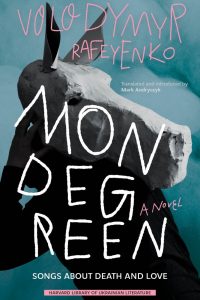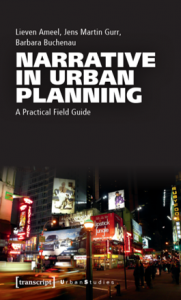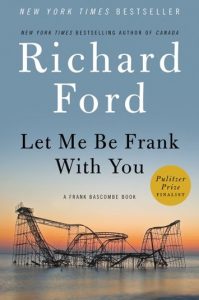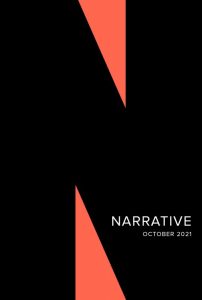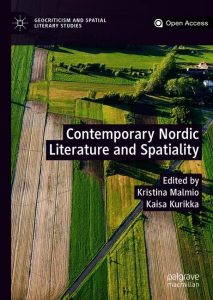The course I am co-teaching with Natalya Bekhta on “The Future of the Novel” is nearing its final stages, with the most recent classes on Bulgarian author Gospodinov’s Time Shelter and Polish author Tokarczuk’s The House of Day, the House of Night, and the final class in a few weeks on Norwegian author Rimbereid’s Solaris corrected. Full updated syllabus below and in this pdf.

Today (25 March), instead of a regular class, our students are listening in to a guest lecture by Eric Hayot on “The End of Aesthetic History” (in collaboration with Narrare) – brilliant perspectives on centuries of aesthetic history, and on the position of the humanities and literary studies in the twentieth century and into the present century.
The future of the novel: New literary forms beyond the centres / Syllabus
The course consists of: 1) lectures 2) individual tasks 3) an open book exam.
Reading requirements: regular theory readings and extracts from literary texts AND one book of your choosing from the reading list.
Abstract
The novel is the globally dominant genre of prose fiction today. How is it being transformed in the twenty-first century? And what new literary forms are being developed in European cultural peripheries? This course addresses these questions by offering a broad introduction to new formalism and contemporary theories of world literature, and through a series of diverse literary readings. The focus of the literary readings will be on literature beyond the current centres of the international literary field, especially literature from continental European peripheries: texts from Ukrainian and Polish contexts, from rural France and the Swedish smalltown, among others. The texts will be read in excerpts in English translation.
Literary texts will act as key resources and the students will be asked to actively reflect on the ways literary forms are tied to the socio-cultural functions of literary works. Regular theory reading and active participation are required. The evaluation will be based on participation, course work, and an open-book exam.
The course will provide students with a thorough understanding of contemporary debates on literary form and world literature, and will enable to understand how new literature from beyond the centres is pushing the boundaries of the contemporary novel. The overall objective of the course is to help shape a better awareness of literature as an integral part of society and a key element of the way we construct notions of identity, memory, language, ethics, politics – and, in short, social reality.
Course outline
1.Introduction 1
Introduction. Forms of twenty-first century literature. New Formalism.
Reading: Caroline Levine: “Introduction: the Affordances of Form.” In Forms: whole, rhythm, hierarchy, network. Princeton UP, 2015.
2. Introduction 2
The novel within the twenty-first century literary field. World literature.
Reading: Mariano Siskind: Siskind, Mariano. “The genres of world literature. The case of magical realism.” The Routledge Companion to World Literature. 2012.
3. Machine Forms : À La Ligne
Literary reading : excerpt from Joseph Ponthus 2019/2021: On the Line (À La ligne).
Theory reading: Kai Mikkonen: The Plot Machine, 14-27, 32-40.
4. Polyphony: Osebol
Voice, authenticity, and polyphony
Literary reading: excerpt from Marit Kapla 2019: Osebol. // Marit Kapla 2019/2021: Osebol. Voices from a Swedish village.
Theory reading: Mariano D’Ambrosio 2019: “Fragmentary writing and polyphonic narratives in twenty-first-century fiction” in The Poetics of Fragmentation. pp. 19-25, 31-32
5. Narrative: Mondegreen
Focus on form: the novel, satire and narrative form
Literary reading: excerpt from Rafeyenko, Volodymyr. Mondegreen: Songs about Death and Love. Translated by Mark Andryczyk. Cambridge (MA): HURI Books, 2022. Pages: 45-60.
Theory reading: Walsh, Richard. “Narrative Theory for Complexity Scientists” in Narrating Complexity, eds. Richard Walsh and Susan Stepney. Cham, Switzerland: Springer, 2018. Pages: 11-19 [until Section 3 “Implications”].
6. Capital: Time Shelter
Focus on world-literary context: literary value and aesthetic capital
Literary reading: excerpt from Gospodinov, Georgi. Time Shelter. Translated from the Bulgarian by Angela Rodel. Weidenfeld & Nicolson: 2022.
Theory reading: Vermeulen, Pieter. “New York, Capital of World Literature? On Holocaust Memory and World Literary Value.” Anglia 135.1 (2017): 67-85.
7. Experiment: The House of Day, the House of Night
“Experimental novel”, literary experiment
Literary reading: excerpt from Olga Tokarczuk, The House of Day, the House of Night (1998)
8. Guest lecture by Eric Hayot: “The End of Aesthetic History; or, Provincializing Modernism”
9. Conclusion: Solaris corrected
Epic, future language, concluding remarks
Literary reading: excerpt from Øyvind Rimbereid 2004/2011: Solaris korrigert / Solaris corrected
Theory reading: Ursula Heise: “Science Fiction and the Time Scales of the Anthropocene.” 275-276, 281-282, 301.
10. Open book exam


